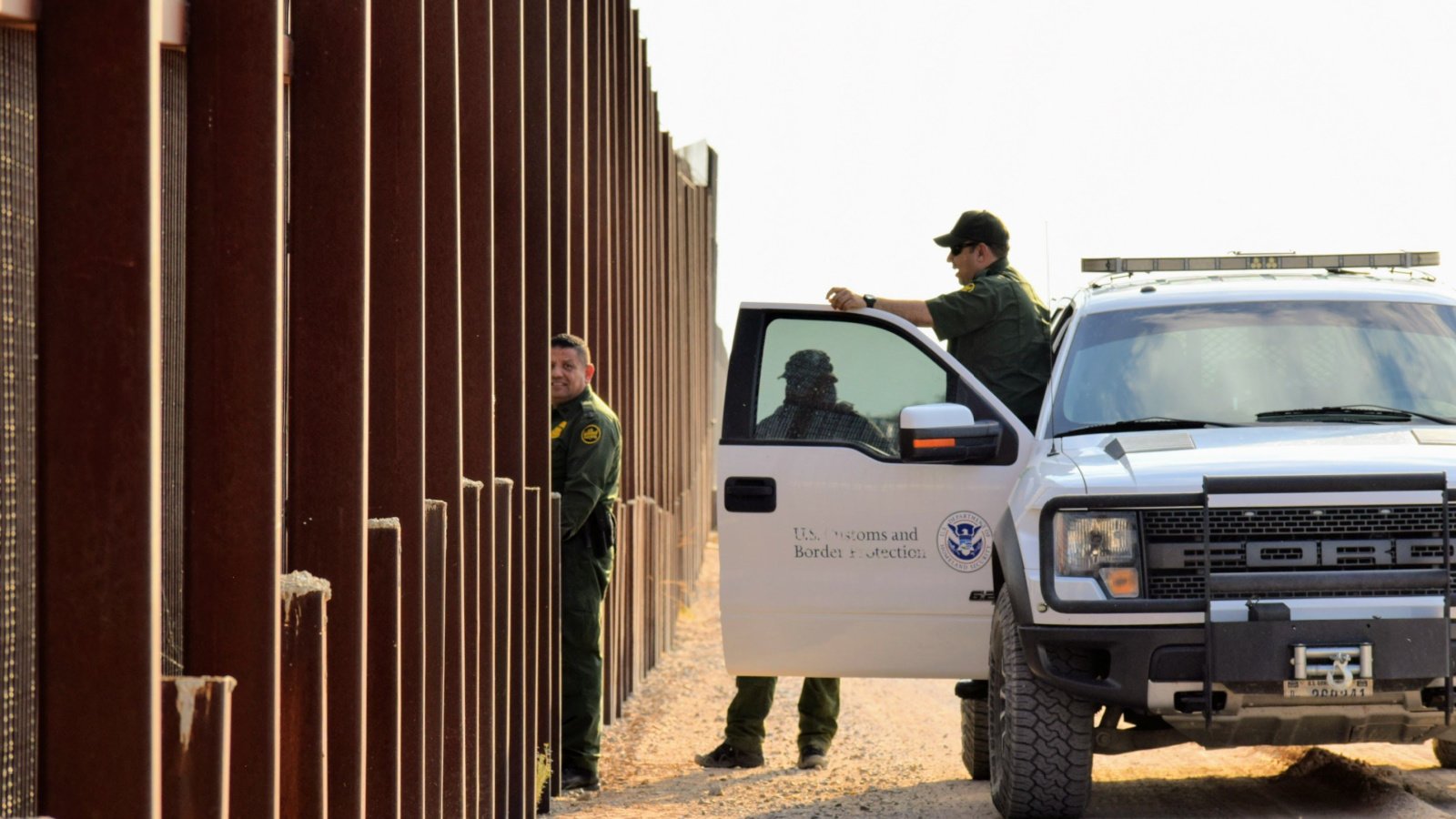United States policymakers, law enforcement authorities, and the healthcare community are grappling with how to protect children exposed to drugs and alcohol by addicted parents. Earlier this year in New York, a 14-month-old boy named Joseph Adonis tragically lost his life due to poisoning from heroin, cocaine, and fentanyl.
Such heart-wrenching stories are not isolated incidents but rather indicators of a larger, ongoing crisis that has been exacerbated by the opioid epidemic.
Tragic Outcomes Nationwide

Across the nation, similar stories of neglect and tragedy unfold. In Arizona, a medically fragile toddler passed away after being left alone in a crib by substance-abusing parents. Missouri witnessed the death of a four-year-old from malnutrition and abuse at the hands of a drug-dependent caregiver. These cases highlight a systemic failure to protect the most vulnerable among us.
The Opioid Epidemic’s Toll on Children

For over a decade, the opioid epidemic has ravaged communities, with pediatric poisonings, emergency interventions with Narcan for infants, and child fatalities on the rise. This trend signifies a dire need for action to protect children caught in the crossfire of addiction.
Shifting Approaches to Addiction

In response to the devastating impact of the crack-cocaine epidemic of the 1980s and 1990s, there has been a national shift toward less punitive, more rehabilitative strategies for dealing with addiction. Public opinion strongly supports this approach, particularly the call for enhanced child protective measures for the children of those battling substance abuse.
The Public’s Call to Action

A significant majority of the public advocates for the child protection system to be more responsive to the needs of children whose parents misuse drugs or alcohol. This outcry for change underscores the widespread recognition of the issue and the demand for systemic reform.
Federal Guidelines and State Responses

Federal law mandates that states implement a “plan of safe care” for substance-exposed infants and their families. However, the execution of these plans varies significantly across states, with some merely documenting available services rather than requiring mandatory treatment. This lack of enforcement leads to many parents not receiving the necessary treatment for substance abuse.
Legislative Challenges

Proposals in several states, including New York and Colorado, aim to restrict the ability of doctors to conduct toxicology tests on newborns without parental consent. This potential legislation, along with hospital policies like those at Mass General, could severely limit the ability to identify and support at-risk infants and their families.
The Cost of Inaction

Untreated parental substance abuse exposes children to an array of risks, including death, poisoning, abuse, neglect, and developmental issues. The developmental timelines of these young children do not align with the often-delayed treatment-seeking behavior of their parents, creating a gap in the care and protection they desperately need.
Centering Children in Policy

Addressing this issue requires placing the safety and developmental needs of children as a priority in policy discussions. With parental addiction identified as a foreseeable risk, state authorities are tasked with implementing measures to mitigate these risks and support the well-being of affected children.
A Compassionate, Firm Approach to Parental Addiction

Offering parents experiencing addiction a mix of support and mandatory treatment through child protective services can serve as a powerful motivator for seeking help. This approach not only aids parents but also acts as a critical safeguard for their children.
Approaches to Protecting Children

“Plans of Safe Care” and Child Protective Services (CPS) interventions are two approaches within the child welfare system aimed at ensuring the safety and well-being of children, particularly those exposed to substances. While both aim to protect vulnerable children, they differ in their approach, execution, and the level of state involvement.
Plans of Safe Care

Plans of Safe Care are specifically designed for infants born exposed to substances and their families. The focus is on providing a safe home environment for the child and addressing the health needs of both the infant and the caregiver.
These plans are often preventative and supportive in nature, aiming to engage families in treatment and support services voluntarily. The goal is to support families in staying together, when safe to do so, by connecting them with necessary resources such as substance abuse treatment, healthcare, and parenting support.
Child Protective Services (CPS)

CPS is a state agency responsible for the protection of all children from abuse and neglect. While CPS can become involved with substance-exposed infants, their scope is broader, encompassing all forms of child maltreatment. Involvement with CPS can be involuntary, initiated through reports of concern, and potentially leading to court-ordered measures if a child’s safety is at risk.
The Role of Data in Shaping Policy

For these policies to be truly effective, a robust system of data collection and evaluation is necessary. Without concrete evidence to guide adjustments and improvements, policies may fall short of their intended goals, leaving children and families at risk.
Evaluating “Plans of Safe Care”

The efficacy of “Plans of Safe Care” as alternatives to more traditional child protective services interventions remains unclear. A lack of comprehensive data makes it challenging to assess whether these plans genuinely serve the best interests of the children they aim to protect.
Addressing the Silent Epidemic

As the United States progresses towards a more empathetic approach to addiction, it is crucial not to overlook the silent victims of this epidemic—the children. Their protection and developmental needs demand urgent attention and action, ensuring they are not forgotten in the shadow of their parents’ struggles.









https://semaglupharm.com/# Rybelsus online pharmacy reviews
semaglutide diet plan: SemagluPharm – Affordable Rybelsus price
https://semaglupharm.shop/# how much is rybelsus at walmart
PredniPharm PredniPharm Predni Pharm
side effects for atorvastatin: USA-based pharmacy Lipitor delivery – No RX Lipitor online
http://lipipharm.com/# atorvastatin 20 mg used for
п»їBuy Rybelsus online USA: Semaglu Pharm – Semaglu Pharm
https://semaglupharm.com/# rybelsus generic
Semaglu Pharm rybelsus 7 mg precio Semaglu Pharm
CrestorPharm: Generic Crestor for high cholesterol – Crestor Pharm
https://semaglupharm.com/# rybelsus long term side effects
prednisone pills 10 mg: Predni Pharm – buy prednisone mexico
Online statin drugs no doctor visit Cheap Lipitor 10mg / 20mg / 40mg can atorvastatin cause depression
Predni Pharm: Predni Pharm – PredniPharm
https://crestorpharm.shop/# CrestorPharm
https://semaglupharm.com/# can semaglutide cause pancreatitis
Crestor mail order USA: Crestor home delivery USA – CrestorPharm
Best price for Crestor online USA Online statin therapy without RX Crestor Pharm
side effects of crestor vs lipitor: can lipitor be taken in the morning – Cheap Lipitor 10mg / 20mg / 40mg
https://semaglupharm.com/# SemagluPharm
PredniPharm: prednisone 20 tablet – prednisone 300mg
semaglutide and hair loss SemagluPharm Semaglu Pharm
what is rosuvastatin prescribed for: Crestor Pharm – crestor online
https://semaglupharm.shop/# SemagluPharm
coupons for crestor: crestor generic price – CrestorPharm
https://prednipharm.shop/# Predni Pharm
Crestor Pharm Crestor Pharm п»їBuy Crestor without prescription
Predni Pharm: prednisone in canada – prednisone 5 tablets
https://semaglupharm.com/# Semaglu Pharm
Generic Crestor for high cholesterol: Crestor Pharm – low dose crestor side effects
can you buy prednisone over the counter uk: prednisone 40mg – PredniPharm
https://semaglupharm.com/# No prescription diabetes meds online
prednisone 10 mg brand name: Predni Pharm – prednisone 500 mg tablet
Safe atorvastatin purchase without RX Lipi Pharm Online statin drugs no doctor visit
https://semaglupharm.com/# Buy Rybelsus online USA
SemagluPharm: Semaglu Pharm – SemagluPharm
does crestor cause weight gain or loss: Crestor Pharm – Rosuvastatin tablets without doctor approval
Cheap Lipitor 10mg / 20mg / 40mg No RX Lipitor online Lipi Pharm
https://semaglupharm.com/# Semaglu Pharm
Lipi Pharm: Lipi Pharm – how to wean off lipitor
Lipi Pharm: Discreet shipping for Lipitor – what is atorvastatin 20 mg used for
PredniPharm PredniPharm prednisone 20mg cheap
prednisone 5 mg tablet without a prescription: Predni Pharm – how can i get prednisone online without a prescription
PredniPharm: PredniPharm – prednisone prescription for sale
http://semaglupharm.com/# No prescription diabetes meds online
PredniPharm prednisone 5mg coupon PredniPharm
LipiPharm: Lipi Pharm – LipiPharm
LipiPharm: atorvastatin and sleep problems – Lipi Pharm
https://semaglupharm.com/# SemagluPharm
Lipi Pharm where is atorvastatin made LipiPharm
http://prednipharm.com/# cost of prednisone 5mg tablets
http://medsfrommexico.com/# Meds From Mexico
reputable mexican pharmacies online: mexican pharmaceuticals online – Meds From Mexico
india pharmacy mail order reputable indian online pharmacy India Pharm Global
mexico drug stores pharmacies: Meds From Mexico – mexico drug stores pharmacies
https://indiapharmglobal.com/# pharmacy website india
India Pharm Global: India Pharm Global – top online pharmacy india
india pharmacy mail order indian pharmacies safe indianpharmacy com
https://medsfrommexico.shop/# Meds From Mexico
canada drugs online reviews: Canada Pharm Global – legit canadian pharmacy online
http://medsfrommexico.com/# mexican drugstore online
canada online pharmacy: canadian pharmacy no rx needed – canadapharmacyonline legit
medicine in mexico pharmacies Meds From Mexico mexican border pharmacies shipping to usa
https://medsfrommexico.shop/# mexico pharmacies prescription drugs
Meds From Mexico: mexican border pharmacies shipping to usa – buying prescription drugs in mexico online
purple pharmacy mexico price list: mexico drug stores pharmacies – Meds From Mexico
https://medsfrommexico.shop/# buying prescription drugs in mexico
online pharmacy canada Canada Pharm Global precription drugs from canada
https://indiapharmglobal.com/# India Pharm Global
canadian pharmacy 24 com: Canada Pharm Global – canada drugs online review
India Pharm Global: indian pharmacies safe – india pharmacy
https://indiapharmglobal.shop/# India Pharm Global
canadian pharmacy meds reviews Canada Pharm Global prescription drugs canada buy online
India Pharm Global: top 10 online pharmacy in india – India Pharm Global
rate canadian pharmacies: Canada Pharm Global – my canadian pharmacy rx
https://indiapharmglobal.com/# mail order pharmacy india
https://medsfrommexico.com/# Meds From Mexico
canadian pharmacy sarasota legal to buy prescription drugs from canada onlinecanadianpharmacy
best canadian pharmacy: Canada Pharm Global – canadian pharmacy reviews
legit canadian online pharmacy: canadian pharmacy online reviews – buying drugs from canada
https://indiapharmglobal.shop/# India Pharm Global
legit canadian pharmacy online Canada Pharm Global pharmacy canadian superstore
canadian pharmacy service: Canada Pharm Global – safe canadian pharmacy
http://indiapharmglobal.com/# reputable indian pharmacies
Meds From Mexico Meds From Mexico best online pharmacies in mexico
mexico pharmacies prescription drugs: Meds From Mexico – Meds From Mexico
buying prescription drugs in mexico online: Meds From Mexico – buying from online mexican pharmacy
http://medsfrommexico.com/# Meds From Mexico
bestГ¤ll medicin hem: billigaste nГ¤tapoteket – Svenska Pharma
https://efarmaciait.shop/# EFarmaciaIt
ph strips apotek: sitronsyre apotek – Гёyekrem apotek
http://raskapotek.com/# Rask Apotek
Svenska Pharma Svenska Pharma Svenska Pharma
farmacias cerca de aqui: parfarmacia – cabello 2b
https://raskapotek.com/# panthenol krem apotek
Svenska Pharma: Svenska Pharma – Svenska Pharma
crema diprogenta precio [url=https://papafarma.shop/#]codigo dodot amazon[/url] Papa Farma
EFarmaciaIt: algix 90 a cosa serve – EFarmaciaIt
https://papafarma.shop/# medicamento movicol
https://efarmaciait.shop/# EFarmaciaIt
internetapotheek spanje: mejor antimosquitos elГ©ctrico ocu – antibiotic cream spain
apotek slemlГ¶sande: Svenska Pharma – doppler apotek
Rask Apotek Rask Apotek pГҐ nett
https://efarmaciait.com/# EFarmaciaIt
Svenska Pharma: rГ¶d bh – melatonin 10 mg apotek
ashwagandha gravid sluta med välling boka pcr test apotek
https://efarmaciait.com/# EFarmaciaIt
https://efarmaciait.com/# sildenafil spray
robilas cosa serve: EFarmaciaIt – EFarmaciaIt
la farmacia.es: Papa Farma – cuanto tarda en hacer efecto movicol sobres
https://svenskapharma.shop/# express leverans apotek
sette vaksine apotek nesehГҐrtrimmer apotek ГҐpningstider apotek pГҐske
prebiotika apotek: febermГҐler apotek – apotek rett hjem
https://papafarma.shop/# Papa Farma
Svenska Pharma Svenska Pharma vad kostar en hörapparat
https://raskapotek.com/# lusekur apotek
hur vet man om yoghurt Г¤r dГҐlig: Svenska Pharma – styling kort hГҐr
Svenska Pharma: Svenska Pharma – Svenska Pharma
http://efarmaciait.com/# EFarmaciaIt
resept nett Rask Apotek Rask Apotek
apotek gave: borax apotek – Rask Apotek
https://papafarma.shop/# misoprostol precio en farmacia españa
EFarmaciaIt: EFarmaciaIt – EFarmaciaIt
EFarmaciaIt EFarmaciaIt parafarmacie online affidabili
http://papafarma.com/# Papa Farma
my fisio barcelona: farmacias 24 horas vigo – farmacia boticas
EFarmaciaIt: travocort crema bambini – g in ml
Papa Farma farmacias. Papa Farma
http://svenskapharma.com/# Svenska Pharma
energidrikk apotek: forsvarsspray apotek – billig shampoo uten silikon
farmacia ortopedia las ventas: farmacia 24h zaragoza – ozempic 1 mg precio
lyrica 25 mg 56 capsule prezzo cosa serve ovixan crema daflon 500 farmae
https://svenskapharma.com/# blodtryck pГҐ apotek
https://raskapotek.shop/# mariatistel apotek
EFarmaciaIt: farmae.it recensioni – EFarmaciaIt
Rask Apotek: apotek lГёrdag – Rask Apotek
http://svenskapharma.com/# olika apotek
Svenska Pharma: Svenska Pharma – hГ¤st lГ¶ss
https://medicijnpunt.com/# apotheek aan huis
apotheke: med apotheek – mijn apotheek
Medicijn Punt: mijn apotheek online – MedicijnPunt
http://pharmajetzt.com/# Pharma Jetzt
Pharma Jetzt Pharma Jetzt versandapotheken in deutschland
safeway pharmacy online prescription refill: PharmaConnectUSA – PharmaConnectUSA
MedicijnPunt: Medicijn Punt – apotheek on line
https://pharmajetzt.shop/# meine online apotheke
https://medicijnpunt.shop/# MedicijnPunt
MedicijnPunt online apotheek 24 apteka nl online
naltrexone indian pharmacy: online overseas pharmacy – egypt pharmacy viagra
obline apotheke: gГјnstig medikamente – Pharma Jetzt
https://pharmaconnectusa.com/# doxycycline generics pharmacy
PharmaJetzt online apotheke versandkostenfrei auf rechnung PharmaJetzt
minuteur douche enfant: ketoprofene et efferalgan – pharmacie moins cher paris
https://pharmaconfiance.com/# ghd service client
target pharmacy azithromycin: PharmaConnectUSA – generic rx online pharmacy
https://pharmaconnectusa.shop/# PharmaConnectUSA
PharmaConnectUSA PharmaConnectUSA PharmaConnectUSA
https://medicijnpunt.shop/# recept medicijnen
Pharma Confiance: Pharma Confiance – poudre fraise pour lait annГ©e 80
de online apotheek: belgie apotheek online – apotheke niederlande
Medicijn Punt landelijke apotheek MedicijnPunt
https://pharmaconnectusa.shop/# pharmacy classes online
amoxicillin pharmacy price: kamagra oral jelly online pharmacy – Pharma Connect USA
PharmaConnectUSA: Pharma Connect USA – Prothiaden
http://medicijnpunt.com/# MedicijnPunt
https://pharmajetzt.com/# online apotheke pille
Medicijn Punt Medicijn Punt online medicijnen bestellen apotheek
Pharma Jetzt: Pharma Jetzt – online apotheke pille danach
Medicijn Punt: medicijnen kopen zonder recept – Medicijn Punt
https://pharmaconfiance.com/# Pharma Confiance
online pharmacy clomid cialis from india pharmacy AebgJoymn
Pharma Connect USA: Pharma Connect USA – AebgCause
Pharma Connect USA: Pharma Connect USA – Pharma Connect USA
https://pharmaconfiance.shop/# le pharmacie
http://pharmaconfiance.com/# laboratoire de garde marseille
Pharma Connect USA: weight loss – PharmaConnectUSA
pharmacie Г Pharma Confiance farmacie online
Pharma Confiance: quand prendre le monuril – gГ©lule amoxicilline
https://pharmaconfiance.com/# Pharma Confiance
best cialis online pharmacy: Pharma Connect USA – PharmaConnectUSA
people’s pharmacy wellbutrin rx pharmacy shop PharmaConnectUSA
onlineapotheken: online apotheke gГјnstig – aptoheke
http://pharmajetzt.com/# online spotheke
http://pharmajetzt.com/# medikamente online bestellen
Kamagra Effervescent: Pharma Connect USA – PharmaConnectUSA
Pharma Confiance Pharma Confiance pharmacie pas cher en ligne
https://medicijnpunt.shop/# apteka den haag
Pharma Jetzt: Pharma Jetzt – PharmaJetzt
Pharma Confiance: 4 biberons de 150 Г 2 mois – Pharma Confiance
PharmaConnectUSA PharmaConnectUSA Pharma Connect USA
http://pharmajetzt.com/# apotheke lieferung
PharmaConnectUSA: lexapro pharmacy coupon – Pharma Connect USA
parapharmacie internet: pure care croquette avis – ketoprofene sun 50 mg
https://pharmajetzt.shop/# internet apotheke
pharmacy2u co uk viagra PharmaConnectUSA Pharma Connect USA
https://pharmaconfiance.shop/# Pharma Confiance
Pharma Jetzt: gГјnstige arzneimittel – PharmaJetzt
Pharma Confiance: Pharma Confiance – Pharma Confiance
Medicijn Punt medicijnen bestellen zonder recept MedicijnPunt
https://pharmajetzt.shop/# PharmaJetzt
Medicijn Punt: betrouwbare online apotheek – Medicijn Punt
Medicijn Punt: Medicijn Punt – MedicijnPunt
https://pharmaconnectusa.shop/# new zealand pharmacy domperidone
http://pharmaconfiance.com/# pharmacie de farde
Pharma Confiance: Pharma Confiance – 59 cl en ml
PharmaConnectUSA: super pharmacy – PharmaConnectUSA
https://pharmaconfiance.shop/# viagra et doliprane
Pharma Connect USA: PharmaConnectUSA – manor pharmacy store locator
MedicijnPunt: recept online – MedicijnPunt
http://pharmajetzt.com/# arzneimittel bestellen
https://pharmaconfiance.shop/# sildenafil pas cher
shop apitheke: PharmaJetzt – Pharma Jetzt
Pharma Confiance: Pharma Confiance – Pharma Confiance
http://pharmaconnectusa.com/# how to start a pharmacy store
parapharmacie cluses: Pharma Confiance – parapharmacie les drakkars
Pharma Confiance: Pharma Confiance – Pharma Confiance
https://pharmaconnectusa.com/# Pharma Connect USA
https://pharmaconfiance.shop/# Pharma Confiance
http://pharmaconfiance.com/# prix du tadalafil en pharmacie
livre sur les fleurs de bach: Pharma Confiance – Pharma Confiance
apotheken im internet: shop apotheke medikamente – PharmaJetzt
https://medicijnpunt.shop/# bestellen apotheek
PharmaJetzt: PharmaJetzt – online apotheke
Medicijn Punt: online recept – Medicijn Punt
https://medicijnpunt.com/# pharma online
http://pharmaconfiance.com/# pharmacie de garde Г montpellier aujourd’hui
bestellapotheken: Pharma Jetzt – Pharma Jetzt
saxenda acheter: Pharma Confiance – Pharma Confiance
https://medicijnpunt.shop/# medicijnen bestellen zonder recept
PharmaJetzt: PharmaJetzt – pille kaufen apotheke
on line pharmacy: Pharma Connect USA – PharmaConnectUSA
MedicijnPunt: apotheke nl – pharma online
https://medicijnpunt.com/# holland apotheke
https://medicijnpunt.shop/# MedicijnPunt
Medicijn Punt: online medicijnen bestellen met recept – MedicijnPunt
online pharmacy group: good online pharmacy – Pharma Connect USA
Pharma Confiance: pharmacie de garde brest ouverte aujourd’hui – Pharma Confiance
https://pharmajetzt.com/# apotal shop
shampoing avene: spray nasal pour chien – pommade argel7 en pharmacie
PharmaConnectUSA: sam’s club pharmacy hours – online pharmacy suboxone
http://pharmaconnectusa.com/# PharmaConnectUSA
online apoteke: PharmaJetzt – Pharma Jetzt
ordonnance pour viagra Pharma Confiance un alfa 0 25
https://pharmajetzt.shop/# online apo
Medicijn Punt: farma online – Medicijn Punt
Medicijn Punt: MedicijnPunt – europese apotheek
http://pharmajetzt.com/# PharmaJetzt
parapharmacie paris: Pharma Confiance – Pharma Confiance
when should a store close down a pharmacy? express pharmacy online rx pharmacy phone number
http://pharmajetzt.com/# gГјnstige apotheke
Pharma Confiance: Pharma Confiance – Pharma Confiance
Pharma Confiance: pharmacie en ligne viagra avec ordonnance – prix viagra en pharmacie
http://pharmajetzt.com/# internet apotheke
pilulier 14 jours: plus grande pharmacie d’europe – Pharma Confiance
apotheek online versandapotheke kostenloser versand PharmaJetzt
MedicijnPunt: Medicijn Punt – Medicijn Punt
MedicijnPunt: belgie apotheek online – MedicijnPunt
https://pharmaconfiance.com/# produit avene pas cher
https://pharmaconnectusa.com/# Pharma Connect USA
Pharma Confiance: prix viagra 100 mg – cariban quand le prendre
online pharmacy kamagra jelly: PharmaConnectUSA – PharmaConnectUSA
https://medicijnpunt.shop/# MedicijnPunt
MedicijnPunt: Medicijn Punt – Medicijn Punt
Pharma Jetzt: apo med – Pharma Jetzt
french healthcare Pharma Confiance Pharma Confiance
pharmacie aldi: avГЁne pro – Pharma Confiance
http://pharmajetzt.com/# Pharma Jetzt
Medicijn Punt: bestellen medicijnen – europese apotheek
https://pharmaconfiance.shop/# grace fleur
PharmaJetzt: PharmaJetzt – apotheke germany
Medicijn Punt Medicijn Punt Medicijn Punt
https://medicijnpunt.com/# holandia apteka internetowa
Pharma Jetzt: billig medikamente – PharmaJetzt
medicatie apotheek: Medicijn Punt – apotgeek
https://pharmaconfiance.com/# parmacie
http://pharmaconfiance.com/# nuxe avis que choisir
pharmacie pres de moi: nhco fer – pharmavie sommeil
PharmaJetzt mediherz versandapotheke online shop bestellen gГјnstiger apotheke
zithromax us pharmacy: п»їlipitor copay card participating pharmacy – usa online pharmacy store
PharmaJetzt: aptheke – apotheke shop online
http://pharmaconnectusa.com/# Pharma Connect USA
kГ©toconazole shampoing sans ordonnance pharmacie de garde manche Pharma Confiance
TijuanaMeds: medicine in mexico pharmacies – buying prescription drugs in mexico online
canadian neighbor pharmacy: best canadian pharmacy – canada pharmacy
https://indimedsdirect.shop/# IndiMeds Direct
https://indimedsdirect.shop/# IndiMeds Direct
TijuanaMeds TijuanaMeds reputable mexican pharmacies online
online canadian drugstore: online canadian drugstore – canada discount pharmacy
TijuanaMeds: TijuanaMeds – buying from online mexican pharmacy
https://canrxdirect.com/# online pharmacy canada
http://tijuanameds.com/# mexican online pharmacies prescription drugs
pharmacies in mexico that ship to usa: TijuanaMeds – TijuanaMeds
indian pharmacy paypal india pharmacy IndiMeds Direct
https://canrxdirect.com/# canada ed drugs
77 canadian pharmacy: CanRx Direct – legitimate canadian pharmacy
canadian pharmacy phone number CanRx Direct legit canadian pharmacy
https://tijuanameds.com/# TijuanaMeds
indian pharmacy: best india pharmacy – IndiMeds Direct
IndiMeds Direct: IndiMeds Direct – IndiMeds Direct
https://canrxdirect.shop/# canada cloud pharmacy
legit canadian pharmacy CanRx Direct the canadian pharmacy
http://indimedsdirect.com/# IndiMeds Direct
medication from mexico pharmacy: mexican border pharmacies shipping to usa – TijuanaMeds
https://tijuanameds.shop/# buying prescription drugs in mexico online
world pharmacy india IndiMeds Direct IndiMeds Direct
IndiMeds Direct: IndiMeds Direct – buy prescription drugs from india
https://tijuanameds.com/# pharmacies in mexico that ship to usa
https://indimedsdirect.shop/# mail order pharmacy india
TijuanaMeds: TijuanaMeds – TijuanaMeds
http://indimedsdirect.com/# online shopping pharmacy india
reputable mexican pharmacies online: TijuanaMeds – TijuanaMeds
best india pharmacy IndiMeds Direct IndiMeds Direct
https://canrxdirect.com/# canadian drugs
TijuanaMeds: mexico drug stores pharmacies – medicine in mexico pharmacies
TijuanaMeds: mexico drug stores pharmacies – mexican mail order pharmacies
misoprostol comprar Farmacia Asequible farmacia palma
https://rxfreemeds.shop/# RxFree Meds
RxFree Meds: accutane pharmacy coupons – RxFree Meds
https://farmaciaasequible.com/# opiniones direct seguros
RxFree Meds: RxFree Meds – mogadon online pharmacy
enclomiphene for sale enclomiphene for sale enclomiphene
target pharmacy metronidazole: over the counter online pharmacy – RxFree Meds
http://rxfreemeds.com/# do pharmacy sell viagra
garmacia: Farmacia Asequible – farma 10 opiniones
https://rxfreemeds.com/# RxFree Meds
Farmacia Asequible: farmacia islas baleares vigo – Farmacia Asequible
enclomiphene online enclomiphene citrate enclomiphene for men
https://enclomiphenebestprice.com/# enclomiphene price
enclomiphene buy: enclomiphene testosterone – enclomiphene best price
enclomiphene price: enclomiphene for men – enclomiphene buy
Farmacia Asequible comprar citrafleet barato Farmacia Asequible
RxFree Meds: RxFree Meds – RxFree Meds
https://enclomiphenebestprice.com/# enclomiphene testosterone
http://farmaciaasequible.com/# dodot talla 1
enclomiphene buy: enclomiphene for men – enclomiphene citrate
Viagra Gold RxFree Meds RxFree Meds
https://enclomiphenebestprice.shop/# buy enclomiphene online
RxFree Meds: RxFree Meds – percocet mexico pharmacy
enclomiphene buy enclomiphene online enclomiphene for men
https://enclomiphenebestprice.com/# enclomiphene
Farmacia Asequible: codigo promocional farmacias top – Farmacia Asequible
http://rxfreemeds.com/# online pharmacy programs
https://farmaciaasequible.com/# cariban precio
pharmaceutical online ordering: xlpharmacy review viagra – RxFree Meds
enclomiphene online enclomiphene online buy enclomiphene online
https://farmaciaasequible.shop/# farmacia ya
enclomiphene for sale: enclomiphene price – enclomiphene for men
https://rxfreemeds.shop/# RxFree Meds
india pharmacy ambien RxFree Meds cheapest prescription pharmacy
https://rxfreemeds.com/# online pharmacy no prior prescription
Farmacia Asequible contorno ojos avГЁne opiniones Farmacia Asequible
farmacias cercanas a mГ: farmacia venta online – para quГ© sirve el vimovo
online pharmacy pain harris teeter pharmacy RxFree Meds
https://rxfreemeds.com/# mometasone online pharmacy
enclomiphene for men: enclomiphene – enclomiphene buy
farmacia madrid 24 horas sildenafilo 10 mg eucerin black friday
RxFree Meds zoloft online pharmacy azithromycin pharmacy
enclomiphene buy: enclomiphene for sale – enclomiphene citrate
https://farmaciaasequible.com/# productos de farmacia online
enclomiphene online enclomiphene for men enclomiphene for sale
ozempic precio 1 mg: elocom picaduras – comprar parafarmacia online
farmacia online economica tadalafil online mounjaro online
https://rxfreemeds.shop/# RxFree Meds
enclomiphene best price enclomiphene for men enclomiphene testosterone
RxFree Meds: pharmacy store locator – terbinafine online pharmacy
http://rxfreemeds.com/# post haste pharmacy viagra
voltaren emulgel online pharmacy revia pharmacy RxFree Meds
Farmacia Asequible: Farmacia Asequible – Farmacia Asequible
Farmacia Asequible pastilla del dГa despuГ©s precio madrid Farmacia Asequible
https://rxfreemeds.com/# cheapest pharmacy to buy plavix
Farmacia Asequible: Farmacia Asequible – comprar viagra genГ©rico online entrega 24 horas portugal
Farmacia Asequible farmacia tienda online Farmacia Asequible
online pharmacy no prescription flagyl us viagra online pharmacy india online pharmacy viagra
Farmacia Asequible: Farmacia Asequible – Farmacia Asequible
https://enclomiphenebestprice.shop/# enclomiphene
Farmacia Asequible pharmacia online Farmacia Asequible
horario farmacias cerca de mi: Farmacia Asequible – Farmacia Asequible
RxFree Meds RxFree Meds RxFree Meds
Farmacia Asequible Farmacia Asequible mejor champГє para niГ±os ocu
enclomiphene online: enclomiphene for men – enclomiphene citrate
http://farmaciaasequible.com/# Farmacia Asequible
RxFree Meds RxFree Meds RxFree Meds
enclomiphene best price: enclomiphene buy – enclomiphene citrate
dodot activity talla 3 plus diprogenta generico farmacias de espaГ±a
http://farmaciaasequible.com/# ozempic 0 25 comprar
https://rxfreemeds.shop/# RxFree Meds
enclomiphene best price: enclomiphene best price – enclomiphene buy
RxFree Meds: online pharmacy cialis no prescription – total rx pharmacy
dietГ©tica central telГ©fono gratuito aceite cbd 20 por ciento opiniones producto farmaceutico
https://rxfreemeds.com/# fred meyer pharmacy hours
enclomiphene for sale: enclomiphene for men – enclomiphene testosterone
https://indomedsusa.shop/# online shopping pharmacy india
MexiMeds Express: medication from mexico pharmacy – MexiMeds Express
https://meximedsexpress.com/# MexiMeds Express
IndoMeds USA: top 10 pharmacies in india – IndoMeds USA
best india pharmacy indian pharmacy paypal indian pharmacy online
https://meximedsexpress.shop/# medicine in mexico pharmacies
mexico drug stores pharmacies: mexico drug stores pharmacies – MexiMeds Express
best online pharmacies in mexico: mexican pharmaceuticals online – medication from mexico pharmacy
http://indomedsusa.com/# IndoMeds USA
rx relief pharmacy MediSmart Pharmacy online pharmacy prozac no prescription
http://medismartpharmacy.com/# lorazepam indian pharmacy
mexican online pharmacies prescription drugs: MexiMeds Express – MexiMeds Express
buy prescription drugs from india: IndoMeds USA – world pharmacy india
https://medismartpharmacy.com/# proventil inhaler online pharmacy
colchicine pharmacy Stromectol ciprofloxacin pharmacy uk
atorvastatin target pharmacy: MediSmart Pharmacy – motilium uk pharmacy
rate canadian pharmacies: buy lortab online pharmacy – canadian pharmacy checker
https://indomedsusa.com/# IndoMeds USA
http://medismartpharmacy.com/# boots pharmacy omeprazole
pharmacy online degrees rite aid pharmacy store locator quality rx pharmacy hyde park ma
giant food store phoenixville pharmacy: mexican pharmacy seroquel – rx express pharmacy hurley ms
canadian pharmacy online: price of percocet at pharmacy – canadian pharmacy sarasota
https://meximedsexpress.com/# MexiMeds Express
IndoMeds USA IndoMeds USA IndoMeds USA
drug store news ce: MediSmart Pharmacy – best online pharmacy lortab
MexiMeds Express: MexiMeds Express – buying prescription drugs in mexico
https://medismartpharmacy.shop/# island pharmacy calcitriol
https://indomedsusa.com/# IndoMeds USA
cymbalta online pharmacy Grifulvin V mckesson pharmacy rx
buying prescription drugs in mexico: reputable mexican pharmacies online – buying prescription drugs in mexico
medicine in mexico pharmacies: MexiMeds Express – MexiMeds Express
http://meximedsexpress.com/# mexican border pharmacies shipping to usa
MexiMeds Express MexiMeds Express mexican border pharmacies shipping to usa
pharmacies in mexico that ship to usa: п»їbest mexican online pharmacies – mexican online pharmacies prescription drugs
IndoMeds USA: IndoMeds USA – indian pharmacy paypal
http://meximedsexpress.com/# MexiMeds Express
https://meximedsexpress.shop/# mexico drug stores pharmacies
MexiMeds Express: purple pharmacy mexico price list – medication from mexico pharmacy
online us pharmacy viagra pharmacy online australia study pharmacy online free
https://indomedsusa.com/# best india pharmacy
canadian drug stores: MediSmart Pharmacy – canadian pharmacy sarasota
MexiMeds Express: MexiMeds Express – medication from mexico pharmacy
premarin online pharmacy MediSmart Pharmacy ventolin hfa online pharmacy
https://medismartpharmacy.com/# online pharmacy no prescription needed
IndoMeds USA: world pharmacy india – IndoMeds USA
IndoMeds USA india pharmacy buy prescription drugs from india
http://indomedsusa.com/# IndoMeds USA
IndoMeds USA: IndoMeds USA – india online pharmacy
mexican rx online: MexiMeds Express – mexico drug stores pharmacies
http://indomedsusa.com/# reputable indian online pharmacy
MexiMeds Express mexican border pharmacies shipping to usa mexican rx online
https://meximedsexpress.com/# MexiMeds Express
IndoMeds USA: IndoMeds USA – best online pharmacy india
https://medismartpharmacy.com/# online pharmacy uk metronidazole
http://indomedsusa.com/# IndoMeds USA
mexican pharmaceuticals online: MexiMeds Express – buying from online mexican pharmacy
mexican drugstore online MexiMeds Express pharmacies in mexico that ship to usa
https://indomedsusa.com/# IndoMeds USA
no prescription pharmacies: MediSmart Pharmacy – buy viagra boots pharmacy
online pharmacy delivery MediSmart Pharmacy generic lipitor online pharmacy
https://indomedsusa.shop/# online pharmacy india
https://medismartpharmacy.com/# Viagra Gold
avodart online pharmacy: coumadin pharmacy – zantac pharmacy
purple pharmacy mexico price list MexiMeds Express buying prescription drugs in mexico online
https://indomedsusa.com/# mail order pharmacy india
pharmacy propecia generic: online pharmacy store in delhi – sildenafil citrate
pharmacy website india reputable indian online pharmacy indian pharmacy
http://indomedsusa.com/# IndoMeds USA
spiraxin 200 se puede comprar sin receta?: comprar test covid farmacia sin receta – diprogenta comprar sin receta
https://pharmadirecte.com/# alprazolam mylan sans ordonnance
sporanox: prezzo tationil 600 mobic 15 mg prezzo
https://ordinasalute.shop/# laurea farmacia online
spasmex prezzo: OrdinaSalute – farmacia online trieste
farmacia online mascarilla fpp2 Clinica Galeno comprar antibiotico
https://ordinasalute.shop/# sonirem gocce a cosa serve
https://pharmadirecte.shop/# som actif sommeil avis
comprar dolmen sin receta: Clinica Galeno – farmacia coruГ±a online
lixiana e stanchezza lantigen b gocce binosto 70 mg
lucen 40 prezzo: OrdinaSalute – olio vea controindicazioni
https://ordinasalute.com/# visunac collirio prezzo
dibase 100.000 soluzione iniettabile si puГІ bere prezzo OrdinaSalute froben sciroppo 5 mg
debridat compresse prezzo: OrdinaSalute – sildenafil 100mg prezzo
https://clinicagaleno.com/# finasteride comprar sin receta
https://clinicagaleno.com/# comprar antalgin sin receta
punture pappataci quanto durano lyrica da 25 mg prezzo zitromax sciroppo
compra online farmacia en cuba: farmacia ourense online – puedo comprar naproxeno sin receta
https://ordinasalute.shop/# drospil pillola prezzo
farmacia online seria Clinica Galeno curso gratis online de farmacia
physiomer oreille: mГ©dicaments otite sans ordonnance – prorhinel unidose
http://ordinasalute.com/# deltacortene 25 prezzo
http://pharmadirecte.com/# acide folique en pharmacie sans ordonnance
farmaciasdirect.com farmacia online y parafarmacia online Clinica Galeno se puede comprar viagra sin receta en farmacias fГsicas
farmacia online mГЎs barata: comprar cialis en espaГ±a sin receta – acxion comprar sin receta
https://zorgpakket.shop/# huisapotheek online
farmacie medicijn medicaties apotheke holland
selvtest corona apotek: apotek ГҐpent julaften – nikkelallergi test apotek
https://zorgpakket.com/# pharmacy online netherlands
drogtest apotek butik lackmuspapper apotek baby apotek
vilket apotek har min medicin: Snabb Apoteket – apotek spruta
mijn apotheek medicijnen medicijnen kopen online de apotheek
lavemangspГҐse apotek: SnabbApoteket – afte apotek
https://tryggmed.com/# adventskalender apotek
https://tryggmed.shop/# tannbleking hjemme apotek
apotek recept hemleverans Snabb Apoteket menstrosor apotek
http://tryggmed.com/# apotek søndagsåpent
apotheker online: online pharmacy – medicatie online
https://tryggmed.shop/# oximeter apotek
online medicijnen bestellen pharma apotheek recept medicijnen
multivitamin apotek: SnabbApoteket – proteinpulver rea
https://zorgpakket.shop/# online apotheek recept
http://zorgpakket.com/# inloggen apotheek
mijn medicijnkosten medicijn online pharmacy netherlands
de apotheker: apotheke nl – medicatie bestellen apotheek
ExpressCareRx: gold rx pharmacy – ExpressCareRx
IndiaMedsHub п»їlegitimate online pharmacies india IndiaMedsHub
http://medimexicorx.com/# best online pharmacies in mexico
mexico pharmacy ambien: escitalopram pharmacy – online pharmacy discount
IndiaMedsHub IndiaMedsHub indian pharmacy paypal
IndiaMedsHub: IndiaMedsHub – IndiaMedsHub
valacyclovir hcl online pharmacy: ExpressCareRx – amoxicillin and beer pharmacy
https://expresscarerx.org/# proscar pharmacy online
lortab pharmacy online ExpressCareRx ExpressCareRx
MediMexicoRx: MediMexicoRx – mexican pharmacy for americans
ExpressCareRx celebrex online pharmacy isotretinoin pharmacy price
https://indiamedshub.com/# IndiaMedsHub
IndiaMedsHub: world pharmacy india – IndiaMedsHub
http://medimexicorx.com/# mexico drug stores pharmacies
isotretinoin from mexico mexican pharmacy for americans MediMexicoRx
https://expresscarerx.online/# people pharmacy zocor
ExpressCareRx: bahrain pharmacy cialis – ExpressCareRx
reputable indian pharmacies: best india pharmacy – best india pharmacy
http://medimexicorx.com/# MediMexicoRx
п»їlegitimate online pharmacies india top 10 pharmacies in india reputable indian online pharmacy
safe place to buy semaglutide online mexico: trusted mexico pharmacy with US shipping – legit mexican pharmacy for hair loss pills
top 10 pharmacies in india: best online pharmacy india – mail order pharmacy india
https://expresscarerx.org/# best online pharmacy to buy cialis
http://expresscarerx.org/# mexican online pharmacy percocet
buy prescription drugs from india Online medicine home delivery indian pharmacy
cialis from us pharmacy: ExpressCareRx – spironolactone online pharmacy
ExpressCareRx: percocet pharmacy price – ExpressCareRx
https://expresscarerx.online/# seroquel xr pharmacy
buy antibiotics over the counter in mexico mexican pharmacy for americans buy kamagra oral jelly mexico
indian pharmacy online: world pharmacy india – cheapest online pharmacy india
buy antibiotics from mexico: prescription drugs mexico pharmacy – MediMexicoRx
http://indiamedshub.com/# top 10 pharmacies in india
http://indiamedshub.com/# indian pharmacy paypal
http://indiamedshub.com/# top 10 pharmacies in india
india pharmacy: best online pharmacy india – cheapest online pharmacy india
MediMexicoRx: sildenafil mexico online – isotretinoin from mexico
generic Finasteride without prescription п»їpropecia Propecia for hair loss online
http://tadalafilfromindia.com/# Cialis without prescription
buy Accutane online: Accutane for sale – isotretinoin online
buy Cialis online cheap: buy Cialis online cheap – tadalafil 20mg pills
buy Accutane online order isotretinoin from Canada to US Accutane for sale
https://isotretinoinfromcanada.shop/# USA-safe Accutane sourcing
buy Zoloft online without prescription USA: Zoloft for sale – sertraline online
buy cheap propecia: Finasteride From Canada – Propecia for hair loss online
http://finasteridefromcanada.com/# cheap Propecia Canada
cheap Propecia Canada cheap Propecia Canada Finasteride From Canada
https://tadalafilfromindia.com/# cheap Cialis Canada
Accutane for sale: Accutane for sale – isotretinoin online
purchase generic Accutane online discreetly: generic isotretinoin – USA-safe Accutane sourcing
order isotretinoin from Canada to US purchase generic Accutane online discreetly USA-safe Accutane sourcing
https://isotretinoinfromcanada.shop/# Accutane for sale
buying cheap propecia without rx: Propecia for hair loss online – cheap Propecia Canada
https://isotretinoinfromcanada.shop/# generic isotretinoin
tadalafil online no rx: cheap Cialis Canada – buy Cialis online cheap
https://tadalafilfromindia.shop/# Tadalafil From India
Cialis without prescription generic tadalafil no prescription Tadalafil From India
Lexapro for depression online: Lexapro for depression online – Lexapro for depression online
Finasteride From Canada: cheap Propecia Canada – cost of cheap propecia
https://lexapro.pro/# Lexapro for depression online
sertraline online Zoloft for sale sertraline online
Propecia for hair loss online: Finasteride From Canada – cheap Propecia Canada
https://tadalafilfromindia.com/# tadalafil online no rx
https://zoloft.company/# sertraline online
Lexapro for depression online: Lexapro for depression online – generic lexapro australia
sertraline online purchase generic Zoloft online discreetly buy Zoloft online
Propecia for hair loss online: Propecia for hair loss online – order cheap propecia
http://finasteridefromcanada.com/# Finasteride From Canada
tadalafil 5mg in india: tadalafil online cost – Tadalafil From India
cheap Propecia Canada buying generic propecia without prescription cheap Propecia Canada
Finasteride From Canada: cheap Propecia Canada – cost generic propecia without insurance
https://isotretinoinfromcanada.shop/# isotretinoin online
https://tadalafilfromindia.shop/# tadalafil price
Zoloft online pharmacy USA: purchase generic Zoloft online discreetly – buy Zoloft online
cheap Propecia Canada Finasteride From Canada cheap Propecia Canada
Cialis without prescription: buy Cialis online cheap – Cialis without prescription
http://tadalafilfromindia.com/# tadalafil – generic
Lexapro for depression online: generic lexapro 20 mg cost – Lexapro for depression online
cost propecia without rx generic Finasteride without prescription generic Finasteride without prescription
generic Finasteride without prescription: generic Finasteride without prescription – Finasteride From Canada
http://isotretinoinfromcanada.com/# cheap Accutane
https://tadalafilfromindia.shop/# generic Cialis from India
Zoloft Company: cheap Zoloft – buy Zoloft online without prescription USA
Zoloft Company Zoloft Company Zoloft Company
compare lexapro prices: cheapest price for generic lexapro – Lexapro for depression online
https://finasteridefromcanada.com/# cheap propecia no prescription
purchase generic Accutane online discreetly isotretinoin online cheap Accutane
Isotretinoin From Canada: order isotretinoin from Canada to US – USA-safe Accutane sourcing
https://isotretinoinfromcanada.com/# isotretinoin online
generic Finasteride without prescription Propecia for hair loss online order generic propecia without rx
sertraline online: Zoloft online pharmacy USA – sertraline online
buy Cialis online cheap: generic tadalafil from canada – tadalafil generic us
Zoloft Company purchase generic Zoloft online discreetly buy Zoloft online without prescription USA
https://lexapro.pro/# Lexapro for depression online
Lexapro for depression online: Lexapro for depression online – Lexapro for depression online
USA-safe Accutane sourcing USA-safe Accutane sourcing generic isotretinoin
Finasteride From Canada: propecia generics – Propecia for hair loss online
buy Zoloft online buy Zoloft online buy Zoloft online
Propecia for hair loss online: generic Finasteride without prescription – buy cheap propecia for sale
https://lexapro.pro/# Lexapro for depression online
Accutane for sale: buy Accutane online – isotretinoin online
generic Cialis from India: generic tadalafil medication – Tadalafil From India
best price for lexapro: how much is generic lexapro – Lexapro for depression online
https://zoloft.company/# Zoloft Company
cheap Propecia Canada: cost generic propecia without prescription – Finasteride From Canada
anti-inflammatory steroids online: prednisone 20mg prices – anti-inflammatory steroids online
Clomid Hub Pharmacy Clomid Hub can i buy generic clomid without prescription
where can i buy amoxocillin: where to buy amoxicillin 500mg without prescription – ClearMeds Direct
anti-inflammatory steroids online: prednisone buy no prescription – medicine prednisone 5mg
https://clomidhubpharmacy.shop/# Clomid Hub
Relief Meds USA order corticosteroids without prescription Relief Meds USA
NeuroRelief Rx: does gabapentin thin your blood – NeuroRelief Rx
NeuroRelief Rx: can i take gabapentin and klonopin together – where can i buy gabapentin
ReliefMeds USA prednisone anti-inflammatory steroids online
order Provigil without prescription: nootropic Modafinil shipped to USA – wakefulness medication online no Rx
https://clearmedsdirect.shop/# amoxicillin 500mg price in canada
order amoxicillin without prescription: medicine amoxicillin 500 – antibiotic treatment online no Rx
gabapentin cause itching: medication gabapentin 300 mg – gabapentin 1a pharma 100 mg hartkapseln
how to buy clomid without dr prescription Clomid Hub Clomid Hub Pharmacy
can you buy prednisone in canada: prednisone 10 mg brand name – pharmacy cost of prednisone
Clear Meds Direct: ClearMeds Direct – ClearMeds Direct
anti-inflammatory steroids online: anti-inflammatory steroids online – prednisone 5mg daily
anti-inflammatory steroids online 200 mg prednisone daily prednisone 20mg price in india
http://wakemedsrx.com/# buy Modafinil online USA
where can i get cheap clomid without prescription: Clomid Hub Pharmacy – Clomid Hub
gabapentin without prescription NeuroRelief Rx NeuroRelief Rx
cost of prednisone: prednisone otc price – order corticosteroids without prescription
buy Modafinil online USA: Wake Meds RX – buy Modafinil online USA
Clomid Hub Pharmacy Clomid Hub Pharmacy where to buy cheap clomid pill
order Provigil without prescription: nootropic Modafinil shipped to USA – Wake Meds RX
http://neuroreliefrx.com/# where buy fluoxetine
where can you buy amoxicillin over the counter Clear Meds Direct Clear Meds Direct
order corticosteroids without prescription: Relief Meds USA – ReliefMeds USA
can i get cheap clomid prices: generic clomid without insurance – get cheap clomid for sale
venlafaxine gabapentin NeuroRelief Rx gabapentin 600 mg side effcets
ClearMeds Direct: order amoxicillin without prescription – amoxil pharmacy
buy Modafinil online USA Modafinil for ADHD and narcolepsy wakefulness medication online no Rx
https://clearmedsdirect.shop/# amoxicillin 500 mg
anti-inflammatory steroids online: anti-inflammatory steroids online – ReliefMeds USA
ampicillin amoxicillin: ClearMeds Direct – buy amoxicillin 500mg capsules uk
amoxicillin generic ClearMeds Direct amoxicillin 200 mg tablet
order corticosteroids without prescription: anti-inflammatory steroids online – order corticosteroids without prescription
where can i get clomid tablets: Clomid Hub Pharmacy – can i order generic clomid online
5mg prednisone: 30mg prednisone – cheap prednisone 20 mg
https://clearmedsdirect.com/# Clear Meds Direct
NeuroRelief Rx: gabapentin dosing diabetic neuropathy – phenibut vs gabapentin
order amoxicillin without prescription: low-cost antibiotics delivered in USA – order amoxicillin without prescription
order corticosteroids without prescription: anti-inflammatory steroids online – prednisone buy no prescription
buying prescription drugs in mexico: MexiCare Rx Hub – buying prescription drugs in mexico
legit canadian online pharmacy: canadian pharmacy online – global pharmacy canada
mexico pharmacy: buy modafinil from mexico no rx – MexiCare Rx Hub
https://canadrxnexus.com/# my canadian pharmacy
rate canadian pharmacies: CanadRx Nexus – CanadRx Nexus
canadian pharmacies compare: canadian online pharmacy – CanadRx Nexus
accutane mexico buy online: MexiCare Rx Hub – gabapentin mexican pharmacy
india online pharmacy: IndiGenix Pharmacy – IndiGenix Pharmacy
buying prescription drugs in mexico: MexiCare Rx Hub – MexiCare Rx Hub
http://mexicarerxhub.com/# MexiCare Rx Hub
buy medicines online in india: IndiGenix Pharmacy – IndiGenix Pharmacy
canadian neighbor pharmacy: CanadRx Nexus – reliable canadian pharmacy reviews
buying from online mexican pharmacy: best mexican online pharmacies – MexiCare Rx Hub
CanadRx Nexus: CanadRx Nexus – canada discount pharmacy
indianpharmacy com: indianpharmacy com – online shopping pharmacy india
CanadRx Nexus: CanadRx Nexus – CanadRx Nexus
https://mexicarerxhub.com/# п»їbest mexican online pharmacies
IndiGenix Pharmacy: IndiGenix Pharmacy – IndiGenix Pharmacy
MexiCare Rx Hub: MexiCare Rx Hub – MexiCare Rx Hub
indianpharmacy com: best india pharmacy – IndiGenix Pharmacy
MexiCare Rx Hub: buy neurontin in mexico – MexiCare Rx Hub
mexican pharmaceuticals online: MexiCare Rx Hub – MexiCare Rx Hub
MexiCare Rx Hub: order from mexican pharmacy online – MexiCare Rx Hub
mexican pharmacy for americans: MexiCare Rx Hub – buy meds from mexican pharmacy
https://indigenixpharm.shop/# pharmacy website india
best mexican online pharmacies: mexican border pharmacies shipping to usa – mexican online pharmacies prescription drugs
mail order pharmacy india: indian pharmacy – IndiGenix Pharmacy
MexiCare Rx Hub: trusted mexico pharmacy with US shipping – MexiCare Rx Hub
mexican pharmaceuticals online: MexiCare Rx Hub – MexiCare Rx Hub
reputable indian online pharmacy: Online medicine home delivery – top 10 pharmacies in india
MexiCare Rx Hub: prescription drugs mexico pharmacy – buy viagra from mexican pharmacy
https://canadrxnexus.com/# canadian 24 hour pharmacy
buying prescription drugs in mexico: reputable mexican pharmacies online – medication from mexico pharmacy
MexiCare Rx Hub: MexiCare Rx Hub – generic drugs mexican pharmacy
MexiCare Rx Hub: MexiCare Rx Hub – MexiCare Rx Hub
IndiGenix Pharmacy: IndiGenix Pharmacy – Online medicine order
MexiCare Rx Hub: MexiCare Rx Hub – amoxicillin mexico online pharmacy
canadian pharmacy prices: ordering drugs from canada – reputable canadian pharmacy
MexiCare Rx Hub: mexico drug stores pharmacies – MexiCare Rx Hub
https://mexicarerxhub.shop/# buying prescription drugs in mexico online
IndiGenix Pharmacy: IndiGenix Pharmacy – п»їlegitimate online pharmacies india
ventolin from india: AsthmaFree Pharmacy – AsthmaFree Pharmacy
furosemida 40 mg FluidCare Pharmacy lasix furosemide
lasix pills: FluidCare Pharmacy – FluidCare Pharmacy
switching from mounjaro to semaglutide: AsthmaFree Pharmacy – AsthmaFree Pharmacy
trusted pharmacy Zanaflex USA Tizanidine tablets shipped to USA Tizanidine tablets shipped to USA
AsthmaFree Pharmacy: AsthmaFree Pharmacy – rybelsus vs jardiance weight loss
http://relaxmedsusa.com/# Tizanidine tablets shipped to USA
RelaxMeds USA: prescription-free muscle relaxants – RelaxMedsUSA
FluidCare Pharmacy FluidCare Pharmacy lasix online
ivermectin topical rosacea: IverCare Pharmacy – IverCare Pharmacy
relief from muscle spasms online: safe online source for Tizanidine – Tizanidine tablets shipped to USA
Tizanidine tablets shipped to USA safe online source for Tizanidine prescription-free muscle relaxants
lasix uses: FluidCare Pharmacy – lasix furosemide
https://fluidcarepharmacy.com/# lasix dosage
IverCare Pharmacy: IverCare Pharmacy – injectable ivermectin for humans
ivermectin 50 mg IverCare Pharmacy IverCare Pharmacy
ventolin 100mcg online: ventolin 4mg – ventolin 4mg tablet
AsthmaFree Pharmacy cost of ventolin in usa AsthmaFree Pharmacy
Tizanidine 2mg 4mg tablets for sale: safe online source for Tizanidine – Tizanidine 2mg 4mg tablets for sale
http://glucosmartrx.com/# rybelsus preço
AsthmaFree Pharmacy order ventolin from canada no prescription 90 mcg ventolin
ventolin 2018: ventolin pharmacy australia – ventolin for sale online
FluidCare Pharmacy: lasix dosage – lasix side effects
AsthmaFree Pharmacy AsthmaFree Pharmacy ventolin prescription
FluidCare Pharmacy: furosemide – furosemide 100mg
IverCare Pharmacy: ivermectin 1 injectable – how long does ivermectin stay in horse manure
lasix 40 mg FluidCare Pharmacy FluidCare Pharmacy
https://ivercarepharmacy.shop/# can i shower after taking ivermectin
FluidCare Pharmacy: FluidCare Pharmacy – lasix 100 mg tablet
order Tizanidine without prescription trusted pharmacy Zanaflex USA buy Zanaflex online USA
AsthmaFree Pharmacy: AsthmaFree Pharmacy – AsthmaFree Pharmacy
IverCare Pharmacy: ivermectin and alcohol consumption – IverCare Pharmacy
AsthmaFree Pharmacy semaglutide manufacturer when to stop rybelsus before surgery
safe online source for Tizanidine: prescription-free muscle relaxants – prescription-free muscle relaxants
http://ivercarepharmacy.com/# buy ivermectin cream
RelaxMedsUSA cheap muscle relaxer online USA relief from muscle spasms online
buy ventolin online usa: AsthmaFree Pharmacy – ventolin price australia
stromectol dosage ivermectin pour on for dogs ivermectin mites
IverCare Pharmacy: what worms does ivermectin kill – rosacea ivermectin
Tizanidine 2mg 4mg tablets for sale: trusted pharmacy Zanaflex USA – Tizanidine tablets shipped to USA
https://glucosmartrx.com/# rybelsus daily or weekly
FluidCare Pharmacy furosemida 40 mg lasix 40mg
rybelsus vs ozempic weight loss: AsthmaFree Pharmacy – semaglutide lawsuit
semaglutide shot in thigh: how to get compounded semaglutide – semaglutide cost per month
buy ventolin over the counter uk: AsthmaFree Pharmacy – AsthmaFree Pharmacy
AsthmaFree Pharmacy 10mg semaglutide dosage chart does rybelsus cause yeast infections
order Tizanidine without prescription: safe online source for Tizanidine – cheap muscle relaxer online USA
ventolin 108 mcg: AsthmaFree Pharmacy – buy ventolin no prescription
stromectol tablets for humans IverCare Pharmacy IverCare Pharmacy
http://asthmafreepharmacy.com/# ventolin diskus
furosemide 100 mg: lasix tablet – lasix generic
furosemida: FluidCare Pharmacy – FluidCare Pharmacy
ventolin prescription online AsthmaFree Pharmacy buy ventolin tablets online
Dang ky GK88: Casino online GK88 – Ca cu?c tr?c tuy?n GK88
Promo slot gacor hari ini: Login Beta138 – Bonus new member 100% Beta138
https://abutowin.icu/# Jackpot togel hari ini
jollibet casino Jollibet online sabong jollibet app
Khuy?n mai GK88: Rut ti?n nhanh GK88 – Dang ky GK88
maglaro ng Jiliko online sa Pilipinas: jilwin – Jiliko casino
Swerte99 login: Swerte99 slots – Swerte99 slots
Link alternatif Mandiribet Mandiribet Link alternatif Mandiribet
Bonus new member 100% Mandiribet: Mandiribet login – Mandiribet login
Tro choi n? hu GK88: Nha cai uy tin Vi?t Nam – Slot game d?i thu?ng
https://pinwinaz.pro/# Onlayn kazino Az?rbaycan
Etibarl? onlayn kazino Az?rbaycanda: Onlayn rulet v? blackjack – Pinco il? real pul qazan
Kazino bonuslar? 2025 Az?rbaycan: Yuks?k RTP slotlar – Kazino bonuslar? 2025 Az?rbaycan
Yeni az?rbaycan kazino sayt? Yeni az?rbaycan kazino sayt? Uduslar? tez c?xar Pinco il?
Qeydiyyat bonusu Pinco casino: Kazino bonuslar? 2025 Az?rbaycan – Slot oyunlar? Pinco-da
Judi online deposit pulsa: Bonus new member 100% Mandiribet – Link alternatif Mandiribet
https://betawinindo.top/# Slot gacor Beta138
Situs judi online terpercaya Indonesia: Link alternatif Mandiribet – Slot jackpot terbesar Indonesia
Qeydiyyat bonusu Pinco casino: Canl? krupyerl? oyunlar – Onlayn kazino Az?rbaycan
jilwin Jiliko slots Jiliko app
Jiliko app: Jiliko casino – Jiliko login
Qeydiyyat bonusu Pinco casino: Canl? krupyerl? oyunlar – Uduslar? tez c?xar Pinco il?
Situs judi resmi berlisensi Slot jackpot terbesar Indonesia Situs judi online terpercaya Indonesia
Bandar togel resmi Indonesia: Bandar togel resmi Indonesia – Abutogel login
https://1winphili.company/# Jollibet online sabong
jollibet app jollibet app 1winphili
Link alternatif Beta138: Withdraw cepat Beta138 – Login Beta138
Swerte99 casino: Swerte99 bonus – Swerte99 slots
Login Beta138 Slot gacor Beta138 Withdraw cepat Beta138
Slot game d?i thu?ng: Nha cai uy tin Vi?t Nam – GK88
Swerte99 casino walang deposit bonus para sa Pinoy: Swerte99 app – Swerte99 app
https://mandiwinindo.site/# Slot jackpot terbesar Indonesia
Jiliko bonus: Jiliko login – maglaro ng Jiliko online sa Pilipinas
Jiliko jilwin maglaro ng Jiliko online sa Pilipinas
Nha cai uy tin Vi?t Nam: GK88 – Khuy?n mai GK88
MediDirect USA: northwest pharmacy domperidone – MediDirect USA
MediDirect USA MediDirect USA family mart store online pharmacy
MediDirect USA: generic ambien online pharmacy – MediDirect USA
http://medidirectusa.com/# online pharmacy ambien
legit mexican pharmacy without prescription: Mexican Pharmacy Hub – Mexican Pharmacy Hub
Indian Meds One: Indian Meds One – india pharmacy
Indian Meds One Indian Meds One best india pharmacy
buy prescription drugs from india: Indian Meds One – buy medicines online in india
https://indianmedsone.shop/# Indian Meds One
buy cialis from mexico: Mexican Pharmacy Hub – mexican pharmacy for americans
Mexican Pharmacy Hub: Mexican Pharmacy Hub – finasteride mexico pharmacy
Indian Meds One indian pharmacy paypal Online medicine home delivery
24 hour drug store: MediDirect USA – contrave online pharmacy
Mexican Pharmacy Hub: cheap cialis mexico – Mexican Pharmacy Hub
https://medidirectusa.com/# buy viagra pharmacy malaysia
MediDirect USA MediDirect USA MediDirect USA
online mexico pharmacy USA Mexican Pharmacy Hub Mexican Pharmacy Hub
https://medidirectusa.com/# MediDirect USA
best prices on finasteride in mexico Mexican Pharmacy Hub Mexican Pharmacy Hub
cialis super active online pharmacy inhousepharmacy biz domperidone MediDirect USA
https://mexicanpharmacyhub.com/# Mexican Pharmacy Hub
MediDirect USA rx pharmacy services no prescription pharmacy valtrex
generic viagra online canadian: SildenaPeak – SildenaPeak
http://sildenapeak.com/# SildenaPeak
SildenaPeak: brand viagra online pharmacy – SildenaPeak
https://tadalify.shop/# Tadalify
find viagra: SildenaPeak – viagra india online purchase
https://tadalify.com/# Tadalify
cialis 20 milligram: Tadalify – cialis male enhancement
best price for sildenafil 50 mg: buy viagra tablet – SildenaPeak
https://tadalify.shop/# Tadalify
Tadalify: buying generic cialis online safe – Tadalify
SildenaPeak: how to viagra tablet – buy viagra usa
http://sildenapeak.com/# discount viagra usa
SildenaPeak: SildenaPeak – SildenaPeak
Online sources for Kamagra in the United States: Safe access to generic ED medication – Non-prescription ED tablets discreetly shipped
http://kamameds.com/# ED treatment without doctor visits
http://kamameds.com/# Fast-acting ED solution with discreet packaging
https://sildenapeak.com/# SildenaPeak
http://tadalify.com/# Tadalify
TrustedMeds Direct: over the counter amoxicillin canada – how much is amoxicillin prescription
lasix generic name: furosemide 100 mg – lasix uses
https://ferticareonline.shop/# FertiCare Online
SteroidCare Pharmacy: SteroidCare Pharmacy – SteroidCare Pharmacy
FertiCare Online: how to buy clomid price – FertiCare Online
furosemide 100mg: CardioMeds Express – furosemide 40 mg
CardioMeds Express: CardioMeds Express – CardioMeds Express
TrustedMeds Direct amoxicillin 500mg prescription TrustedMeds Direct
https://steroidcarepharmacy.com/# medicine prednisone 5mg
TrustedMeds Direct: TrustedMeds Direct – order amoxicillin online uk
SteroidCare Pharmacy SteroidCare Pharmacy prednisone 50 mg price
amoxicillin 500mg capsules uk: TrustedMeds Direct – TrustedMeds Direct
п»їFarmacia online migliore farmacia online Italia Farmacia online piГ№ conveniente
https://pillolesubito.com/# farmacia online
http://pillolesubito.com/# comprare farmaci online all’estero
https://pillolesubito.shop/# farmacia online
https://maplemedsdirect.com/# MapleMeds Direct
https://bharatmedsdirect.com/# best online pharmacy india
BorderMeds Express: BorderMeds Express – BorderMeds Express
mexican mail order pharmacies: purple pharmacy mexico price list – mexican online pharmacies prescription drugs
https://maplemedsdirect.shop/# best online pharmacy generic cialis
world pharmacy india: BharatMeds Direct – top online pharmacy india
BharatMeds Direct: buy prescription drugs from india – BharatMeds Direct
https://bordermedsexpress.shop/# BorderMeds Express
BorderMeds Express: mexico drug stores pharmacies – best online pharmacies in mexico
MapleMeds Direct: online no prescription pharmacy – MapleMeds Direct
https://1wbook.com/# Book of Ra Deluxe soldi veri
casino online sicuri con Starburst: giocare da mobile a Starburst – Starburst slot online Italia
https://1wstarburst.com/# migliori casino online con Starburst
preman69 login: preman69 slot – slot gacor hari ini preman69
http://1wstarburst.com/# jackpot e vincite su Starburst Italia
https://1win69.shop/# preman69 slot
toto slot hargatoto: toto slot hargatoto – hargatoto login
kratonbet login kratonbet alternatif kratonbet alternatif
hargatoto login: toto slot hargatoto – hargatoto login
https://tap.bio/@hargatoto# hargatoto slot
toto slot hargatoto hargatoto login hargatoto slot
kratonbet link: kratonbet alternatif – kratonbet link
inatogel INA TOGEL Daftar Login Alternatif Togel
betawi 77 slot: betawi 777 – betawi 77 slot
hargatoto login: hargatoto alternatif – hargatoto slot
kratonbet alternatif: kratonbet login – kratonbet link
EverGreenRx USA: EverGreenRx USA – EverGreenRx USA
EverGreenRx USA: cialis soft tabs canadian pharmacy – tadalafil pulmonary hypertension
https://evergreenrxusas.com/# EverGreenRx USA
EverGreenRx USA: EverGreenRx USA – cialis brand no prescription 365
how to buy cialis: EverGreenRx USA – cialis prescription assistance program
https://evergreenrxusas.com/# EverGreenRx USA
EverGreenRx USA: EverGreenRx USA – when should you take cialis
EverGreenRx USA: EverGreenRx USA – EverGreenRx USA
https://bluepilluk.com/# BluePillUK
order viagra online safely UK http://meditrustuk.com/# MediTrustUK
cialis online UK no prescription: weekend pill UK online pharmacy – cialis cheap price UK delivery
http://meditrustuk.com/# ivermectin tablets UK online pharmacy
BluePillUK https://intimacareuk.com/# cialis online UK no prescription
http://mediquickuk.com/# MediQuick UK
BluePillUK http://intimacareuk.com/# buy ED pills online discreetly UK
weekend pill UK online pharmacy: weekend pill UK online pharmacy – weekend pill UK online pharmacy
IntimaCareUK: cialis cheap price UK delivery – tadalafil generic alternative UK
BluePill UK: BluePill UK – fast delivery viagra UK online
sildenafil tablets online order UK: viagra online UK no prescription – BluePill UK
IntimaCare: cialis cheap price UK delivery – confidential delivery cialis UK
ivermectin without prescription UK: ivermectin cheap price online UK – ivermectin cheap price online UK
BluePillUK: fast delivery viagra UK online – fast delivery viagra UK online
canadian pharmacy ed medications: TrueNorth Pharm – onlinecanadianpharmacy
TrueNorth Pharm: TrueNorth Pharm – TrueNorth Pharm
https://curabharatusa.shop/# online pharmacy in india
shop medicine online CuraBharat USA CuraBharat USA
http://curabharatusa.com/# adderall online india
https://curabharatusa.com/# online medicine india
farmacias online usa: mexican drug store – best mexican online pharmacy
farmacia pharmacy mexico pharmacys in mexico mexico drug store
https://curabharatusa.shop/# CuraBharat USA
order medicine online india: CuraBharat USA – CuraBharat USA
п»їshop apotheke gutschein online apotheke deutschland ohne rezept medikament ohne rezept notfall
https://intimgesund.com/# preisvergleich kamagra tabletten
https://gesunddirekt24.com/# eu apotheke ohne rezept
http://potenzapothekede.com/# PotenzApotheke
https://potenzapothekede.shop/# tadalafil 20mg preisvergleich
EverTrustMeds: EverTrustMeds – Ever Trust Meds
http://clearmedshub.com/#
EverTrustMeds: Ever Trust Meds – EverTrustMeds
https://evertrustmeds.shop/# EverTrustMeds
VitalEdge Pharma: VitalEdgePharma – VitalEdgePharma
http://vitaledgepharma.com/# VitalEdge Pharma
EverTrustMeds: Generic Cialis price – EverTrustMeds
https://clearmedshub.shop/# ClearMedsHub
https://evertrustmeds.shop/# Generic Cialis price
VitalEdgePharma: VitalEdge Pharma – cheap ed treatment
https://clearmedshub.shop/# ClearMedsHub
VitalEdgePharma: ed online prescription – buy ed medication online
https://clearmedshub.com/# Clear Meds Hub
https://evertrustmeds.shop/# Ever Trust Meds
VitalEdgePharma: VitalEdgePharma – VitalEdge Pharma
Best online Indian pharmacy: Indian pharmacy international shipping – Indian pharmacy to USA
Canadian pharmacy online: canadian pharmacy – Canadian pharmacy prices
https://curamedsindia.shop/# Best Indian pharmacy
mexican pharmacy: Mexican pharmacy ship to USA – BajaMedsDirect
indian pharmacy: CuraMedsIndia – Best online Indian pharmacy
https://maplecarerx.com/# canadian pharmacy
https://curamedsindia.com/# best online pharmacy
tadalafil: Buy Tadalafil online – Generic Cialis without a doctor prescription
tadalafil Buy Tadalafil 20mg tadalafil
Legit online Mexican pharmacy: Legit online Mexican pharmacy – Legit online Mexican pharmacy
tadalafil generic price tadalafil prescription Buy Tadalafil online
tadalafil: Buy Tadalafil online – tadalafil
Sildenafil 100mg Buy sildenafil Sildenafil 100mg
Sildenafil 100mg: Buy sildenafil – Buy sildenafil online usa
Buy sildenafil online usa true vital meds Sildenafil 100mg
Buy Tadalafil online where can i buy tadalafil Generic tadalafil 20mg price
true vital meds: Sildenafil 100mg price – Sildenafil 100mg price
tadalafil tablets 10 mg online Buy Tadalafil online Buy Tadalafil 20mg
Generic tadalafil 20mg price: Buy Tadalafil online – Buy Tadalafil online
п»їmexican pharmacy Online Mexican pharmacy Legit online Mexican pharmacy
Buy sildenafil: sildenafil online pharmacy – sildenafil
Generic tadalafil 20mg price Buy Tadalafil online Generic tadalafil 20mg price
buy finasteride: buy propecia pill – buy propecia
AmoxDirect USA buy amoxil Purchase amoxicillin online
how to get zithromax: ZithroMeds Online – zithromax z- pak buy online
10 mg prednisone: Prednisone without prescription USA – prednisone 2 mg
https://everlastrx.shop/# EverLastRx
online pharmacy Prednisone fast delivery: online pharmacy Prednisone fast delivery – PredniWell Online
tadalafil daily 5mg: Tadalafil tablets – generic tadalafil medication
pharmacy online UK: private online pharmacy UK – online pharmacy
https://britmedsdirect.com/# pharmacy online UK
https://amoxicareonline.shop/# amoxicillin uk
buy viagra: BritPharm Online – viagra uk
https://medreliefuk.com/# order steroid medication safely online
generic Amoxicillin pharmacy UK: generic Amoxicillin pharmacy UK – buy penicillin alternative online
http://amoxicareonline.com/# Amoxicillin online UK
https://britpharmonline.shop/# viagra uk
generic Amoxicillin pharmacy UK: Amoxicillin online UK – generic amoxicillin
BritMeds Direct: order medication online legally in the UK – UK online pharmacy without prescription
https://britmedsdirect.com/# Brit Meds Direct
BritMeds Direct: private online pharmacy UK – BritMeds Direct
buy prednisolone: best UK online chemist for Prednisolone – UK chemist Prednisolone delivery
order ED pills online UK: BritPharm Online – British online pharmacy Viagra
http://britpharmonline.com/# British online pharmacy Viagra
order medication online legally in the UK: private online pharmacy UK – online pharmacy
https://medreliefuk.shop/# buy corticosteroids without prescription UK
buy prednisolone: cheap prednisolone in UK – buy prednisolone
https://britmedsdirect.com/# BritMeds Direct
http://amoxicareonline.com/# Amoxicillin online UK
mexican pharmacy: MedicoSur – mexico pharmacy
mexican pharmacy MedicoSur mexico pharmacy
generic Cialis online pharmacy cialis generic Cialis online pharmacy
cialis TadaLife Pharmacy buy cialis online
trusted online pharmacy for ED meds: trusted online pharmacy for ED meds – trusted online pharmacy for ED meds
buy propecia trusted online pharmacy USA safe online medication store
tadalafil sans ordonnance: cialis 20 mg achat en ligne – achat discret de Cialis 20mg
pharmacie qui vend du cialis sans ordonnance: cialis prix – pharmacie en ligne fiable
potenzmittel cialis: cialis 20mg preis – cialis generika
cialis generika: cialis kaufen – PotenzVital
Cialis genérico económico: Tadalafilo Express – tadalafilo sin receta
comprar Cialis online España: farmacia online fiable en España – tadalafilo
acheter Cialis en ligne France: acheter Cialis en ligne France Рtrouver un m̩dicament en pharmacie
cialis: pillole verdi – compresse per disfunzione erettile
Tadalafil 20mg Bestellung online: cialis kaufen ohne rezept – tadalafil 20 mg preis
https://mediuomo.com/# MediUomo
veilige online medicijnen Nederland: Sildenafil zonder recept bestellen – ED-medicatie zonder voorschrift
Heren Gezondheid ED-medicatie zonder voorschrift Heren Gezondheid
http://mediuomo.com/# trattamento ED online Italia
Sildenafil-tabletter pris: onlineapotek för män – diskret leverans i Sverige
https://confiafarmacia.com/# farmacia online para hombres
billig Viagra Sverige: Viagra utan läkarbesök – erektionspiller på nätet
köpa Viagra online Sverige: Sildenafil utan recept – köp receptfria potensmedel online
https://herengezondheid.shop/# HerenGezondheid